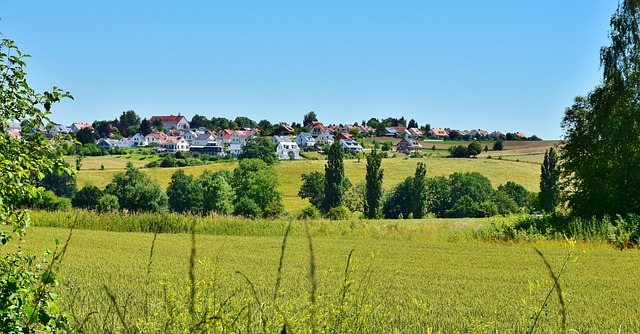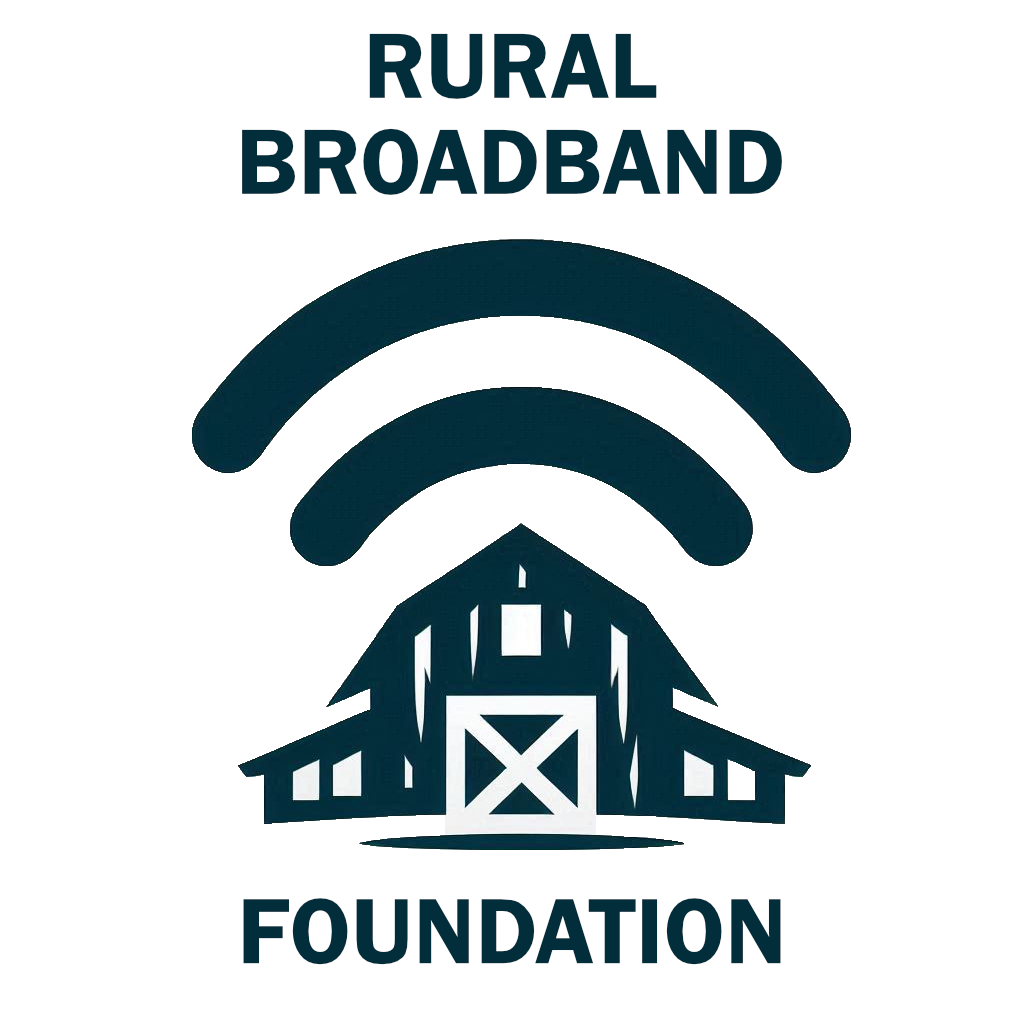rural broadband foundation
A significant portion of the United States consists of rural communities—small towns and remote areas far from major urban centers. These regions often lack many of the conveniences that city dwellers take for granted. The COVID-19 pandemic underscored the critical need for modern broadband access in rural areas, ensuring residents can stay connected for work, education, healthcare, and emergency services.
Broadband access is defined as internet speeds of 100 megabits per second for downloads and 20 megabits per second for uploads, enabling seamless communication and digital access. The Rural Broadband Foundation was established to help bring this essential infrastructure to rural communities, ensuring they have the tools needed to thrive in the modern world.
Our Mission Statement
The Rural Broadband Foundation is a nonprofit 501(c)(3) organization dedicated to bridging the digital divide by expanding high-speed internet access in rural communities. We collaborate with internet service providers, rural electric cooperatives, and key stakeholders to develop sustainable solutions that ensure reliable connectivity for underserved areas.
Access to high-speed internet is essential for education, healthcare, economic growth, and emergency services, yet many rural communities remain disconnected due to infrastructure limitations and financial barriers. The Rural Broadband Foundation works to overcome these challenges by fostering partnerships, advocating for policy improvements, and coordinating resources to bring modern broadband technology to those who need it most.
In addition to our broadband initiatives, we maintain our own website, conduct financial appraisals, and oversee research-to-realization prototyping design, ensuring rural communities have access to reliable digital tools and innovative solutions.
Our mission is to empower rural communities with the tools necessary to thrive in the digital age, ensuring that no household, school, farm, or business is left behind.
The Importance of Broadband Access in Rural Areas
Bridging the Digital Divide
Rural communities deserve the same access to fast, reliable internet as urban areas. High-speed connectivity enables residents to work remotely, access online education, and stay connected with the world—ensuring they aren’t left behind in the digital age.
Empowering Small Businesses
Local businesses are the backbone of rural economies. With high-speed internet, entrepreneurs can expand their reach, engage in e-commerce, and compete in a global market. Reliable connectivity fosters innovation and economic growth, creating more opportunities for rural communities.
Supporting Emergency Services
Hospitals, fire departments, and law enforcement rely on fast internet for critical operations. Telemedicine, emergency response coordination, and real-time data sharing can save lives. High-speed internet ensures rural areas have access to the healthcare and safety services they need.
Meet the Board Members
Marshall Boyette
Chief Executive Officer
Mr. Boyette worked as a Senior Research Associate at Jackson State University, Jackson, MS and previously was a project manager for the U. S. Army Corp of Engineer’s High Performance Computer Center after retiring from the MS Air National Guard. While there he was responsible for automation and digitizing all manuals, regulations, directives. This allowed Corp personnel to access this data from any site. This program saved the Center hundreds of thousands of dollars over proposals for lesser systems being offered by commercial industry. He also was responsible for the performance of the network and was asked to develop steps to improve performance. His recommendations increased the speed of the systems dramatically.
In the Mississippi Air National Guard, Mr. Boyette was an Internet Technology Manager over a wide area network supporting three units state wide and over information and telecommunication security. His role was to constantly monitor and inform command of any possible network threats inside or outside the network. During his tenure his network was never hacked.
Mr. Boyette worked in conjunction with USAF personnel to address threat scenarios during the units participation in the Air Force’s training exercises named Red Flag. He produced counter measures solutions to these threats. In post evaluation of the unit’s participation in the exercise, they were informed that they were the only transport unit to lose no aircraft to hostile actions.
Ron Ogan
Executive Vice-President Operations
Mr. Ogan formed SNIC Enterprises Incorporated. Mississippi certificate # 2018286128 with Marshall Boyette and Paul E. Watson, P.E., a veteran owned business specializing in cybersecurity solutions for the U.S. government, Universities and Companies to prevent hacker threats from disrupting normal business operations and filed a non-provisional utility patent 16/265,986 on 11 May 2019.
Mr. Ogan has been a Disaster Reservist for Mississippi Emergency Management Agency for the last two years supporting the Watch Desk, Earthquake and Drone Surveillance programs. In 2018, Mr. Ogan filed a non-provisional Utility US Patent for a network cybersecurity product and he has experience in computer security and vulnerability assessments.
Mr. Ogan recently was a Senior Research Engineer at Georgia Tech Research Institute working on the Missile Defense Agency program supporting systems engineering and sensor developments. Prior experience at Raytheon Systems Company, Forest, MS and El Segundo, CA included development, design and testing of advanced Electronically Scanned Phased Array (AESA) radar systems for the F/A-15 and F/A-18 aircraft. Skills include certified Six Sigma Specialist, Integrated Product Design Performance IPDP lead using SLATE and DOORS ® software for systems allocations.
Professional experience also includes, telecommunications and space communications system for military and commercial applications in ground based, airborne and space based electronics.
Mr. Ogan, worked as a Industry Adjunct Instructor at the University of North Texas, developed and taught a project-oriented course Radio Frequency Identification technology (RFId) for engineering in support of a National Science Foundation grant.
Mr. Ogan is a certified Six Sigma Specialist with several projects completed that resulted in total program savings in millions of dollars. Analysis skills include MATLAB radar modeling simulations and device characterization electrical design and improvement Mr. Ogan is an IEEE Life Senior Member, Major in the USAF Civil Air Patrol, Pilot, Remote Pilot and member of the Association of Unmanned Vehicle Systems International www.auvsi.org and Aircraft Owners and Pilot Association (AOPA).
Paul E. Watson
Chief Technical Officer
Paul E. Watson worked as a Senior Research Associate at Jackson State University, Jackson, MS. Paul E. Watson, P.E. is an IEEE Senior member and retired from Raytheon. At Raytheon, he worked as Test Department Engineer, Start-Up Manager and Senior Test Engineer Section Head. Mr. Watson worked as a Contract EE Engineer for Geologics Inc to Raytheon and held Secret and Top Secret DoD clearances working on radar systems. Mr. Watson performed complex tasks in the Radar Near Field Probe and environmental systems facility for Radar Antennas and PLS Radar Systems.
Mr. Watson also has experience working in the agriculture field of beekeeping and has written an E-Book on building Bee Equipment and another one on Making Honey. Mr. Watson has completed a lecture for the Lake Library on November 18th 2015 and for the Forest Garden Club on February 16th 2016, in collaboration with the Mississippi State University Extension Center.
Mr. Watson has designed a special beetle predator killing system with potential patent pending when testing is completed. He also has designed timers and controllers with electronic devices for industry. Mr. Watson has a Master in Electrical Engineering (MSEE) from Mississippi State University and is a registered Professional Engineer with the state of Mississippi. Mr. Watson is retired from the United States Naval Reserve (USNR).

The Current Situation
The recent COVID pandemic has unearthed a problem in our nation. It was necessary for thousands of our school children to learn virtually. It was soon discovered that many of our rural areas had little or no internet access. What access they had was old slow technology.
Currently almost 1 in 4 rural households, schools, farms, and businesses have slow or no internet access. Among Native Americans the number is closer to 1 in 3.
Recent events have shown how necessary if is for rural areas to have the latest technology in case of an emergency. Rural airports and emergency management centers do not have access to modern internet speeds. This endangers people. High speed internet is the backbone of modern society. It is necessary for rural areas to be brought into the twenty first century.
In rural areas our country has failed to give these people the tools necessary to progress, or in some instances, to save their lives. Our nation’s food supply suffers from lack of modern technology. It is necessary for rural areas to be furnished the technology to move into modern society.
To fail to update rural internet service is costing our country billions in lost revenue and sending thousands of fellow Americans on a path to lower futures. The Rural Broadband Foundation is striving to correct this problem.
What Can We Do?
The Rural Broadband Foundation recognizes that current efforts to expand high-speed internet access in rural areas are insufficient and destined to fall short. The challenge is clear—no single company possesses the resources or infrastructure to address this issue alone.
As a nonprofit organization, the Rural Broadband Foundation is not committed to a singular approach but rather to a comprehensive, collaborative solution. We understand that delivering high-speed internet to rural communities requires the coordination of multiple stakeholders, including internet service providers, electrical equipment manufacturers, rural electric cooperatives, educational institutions, and all levels of government—local, state, and federal.
The Rural Broadband Foundation is dedicated to bridging the digital divide by uniting these essential partners. We believe in a strategic, cooperative approach to rural broadband expansion and are committed to working with all necessary parties to make it a reality.

